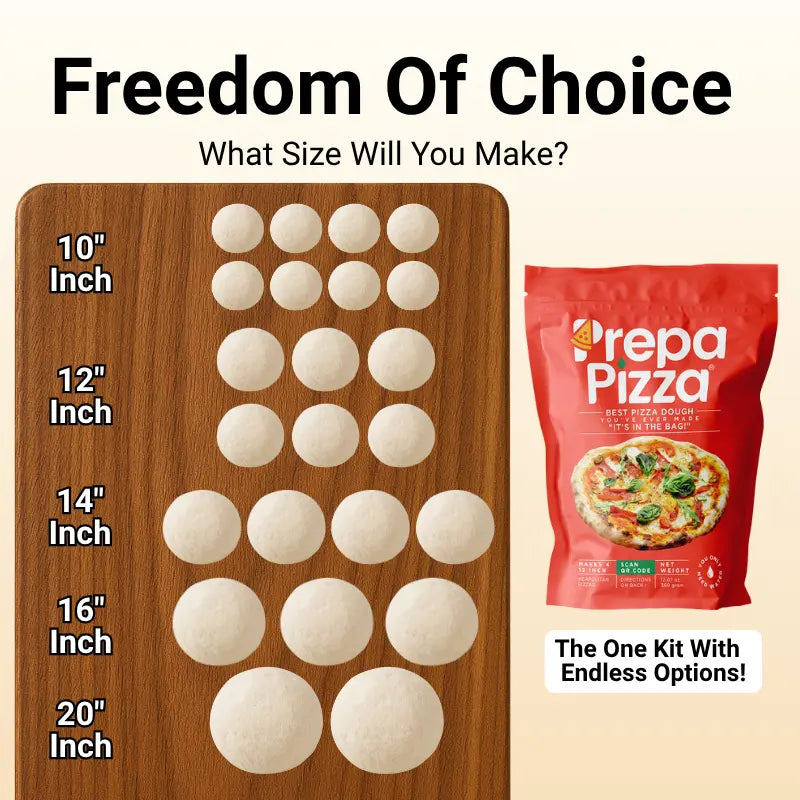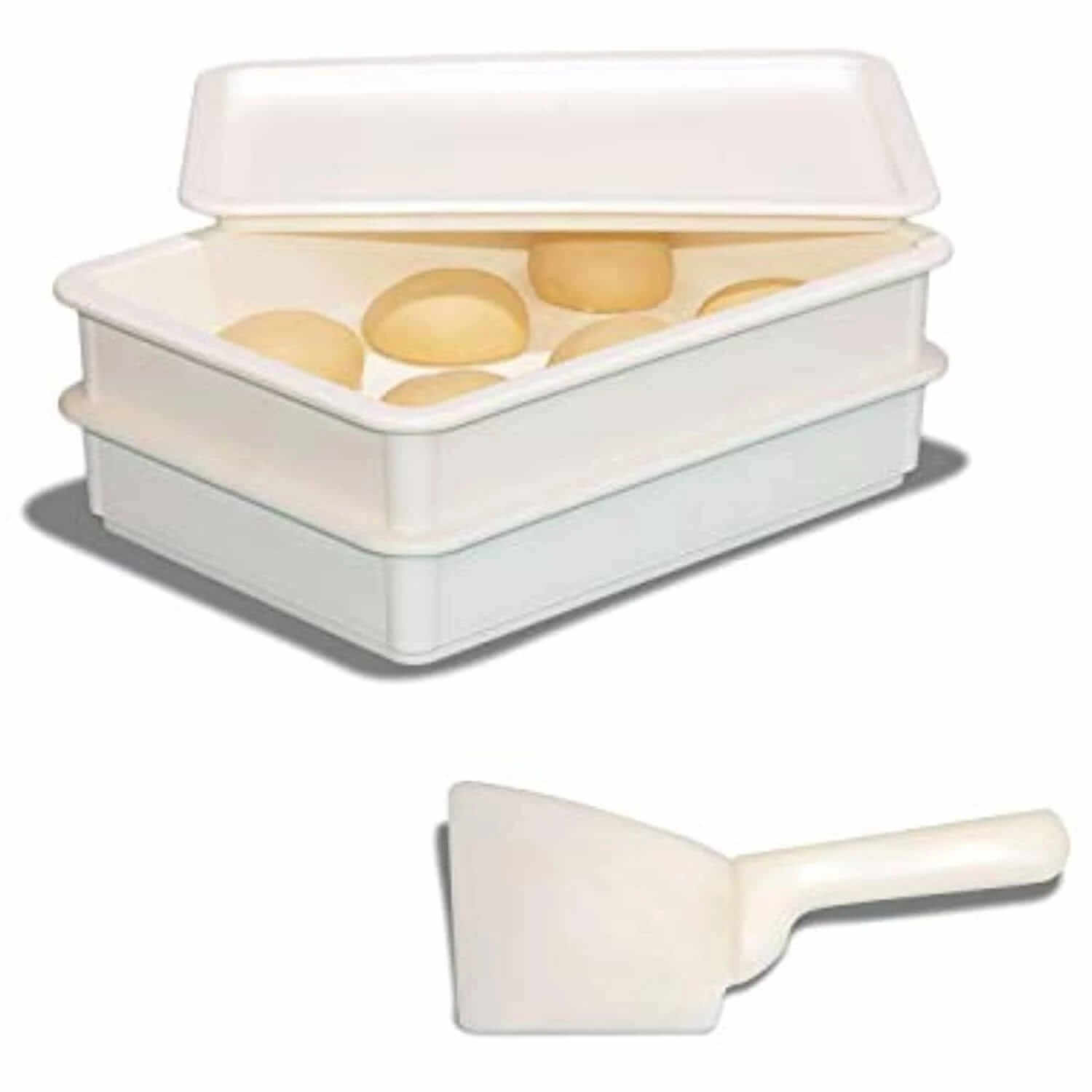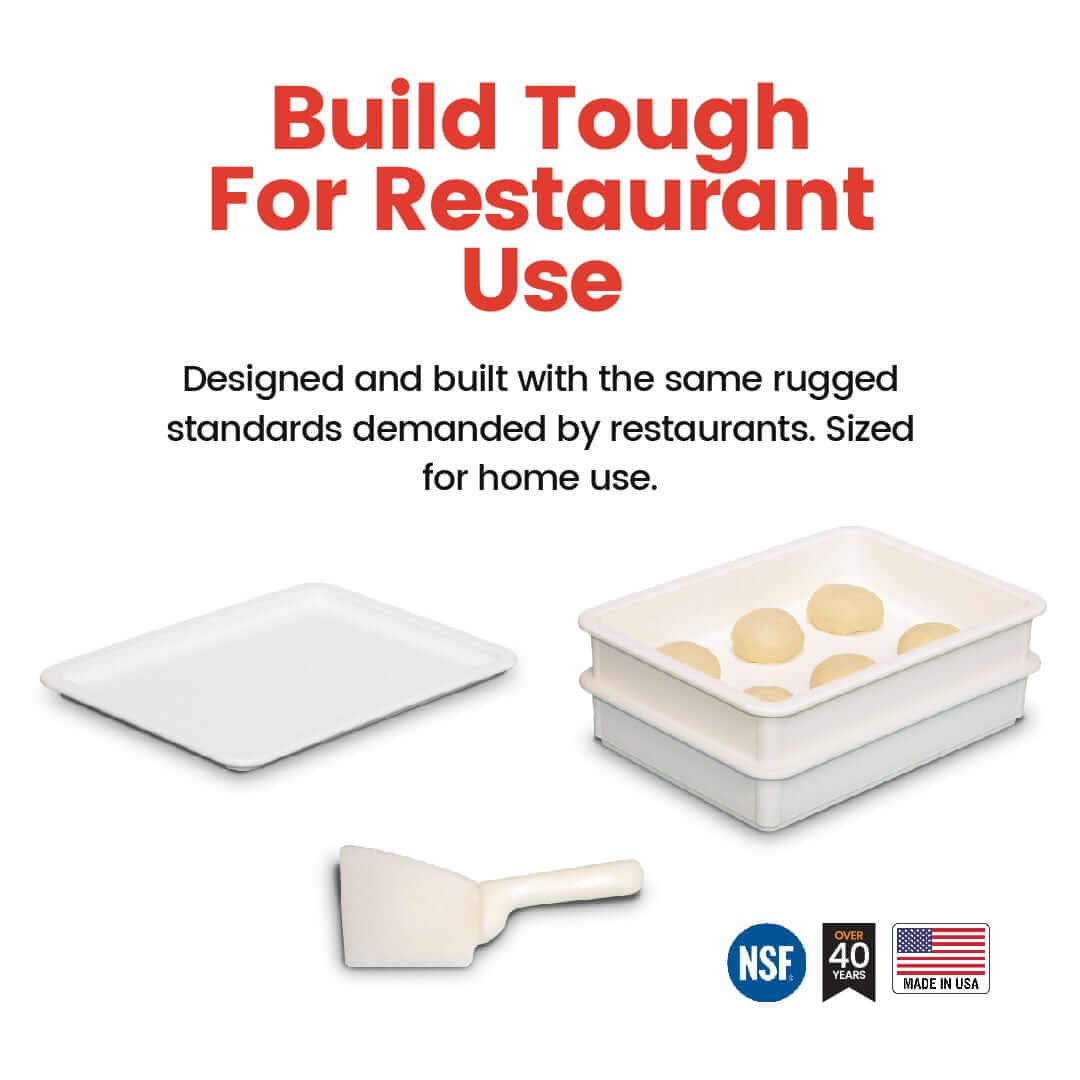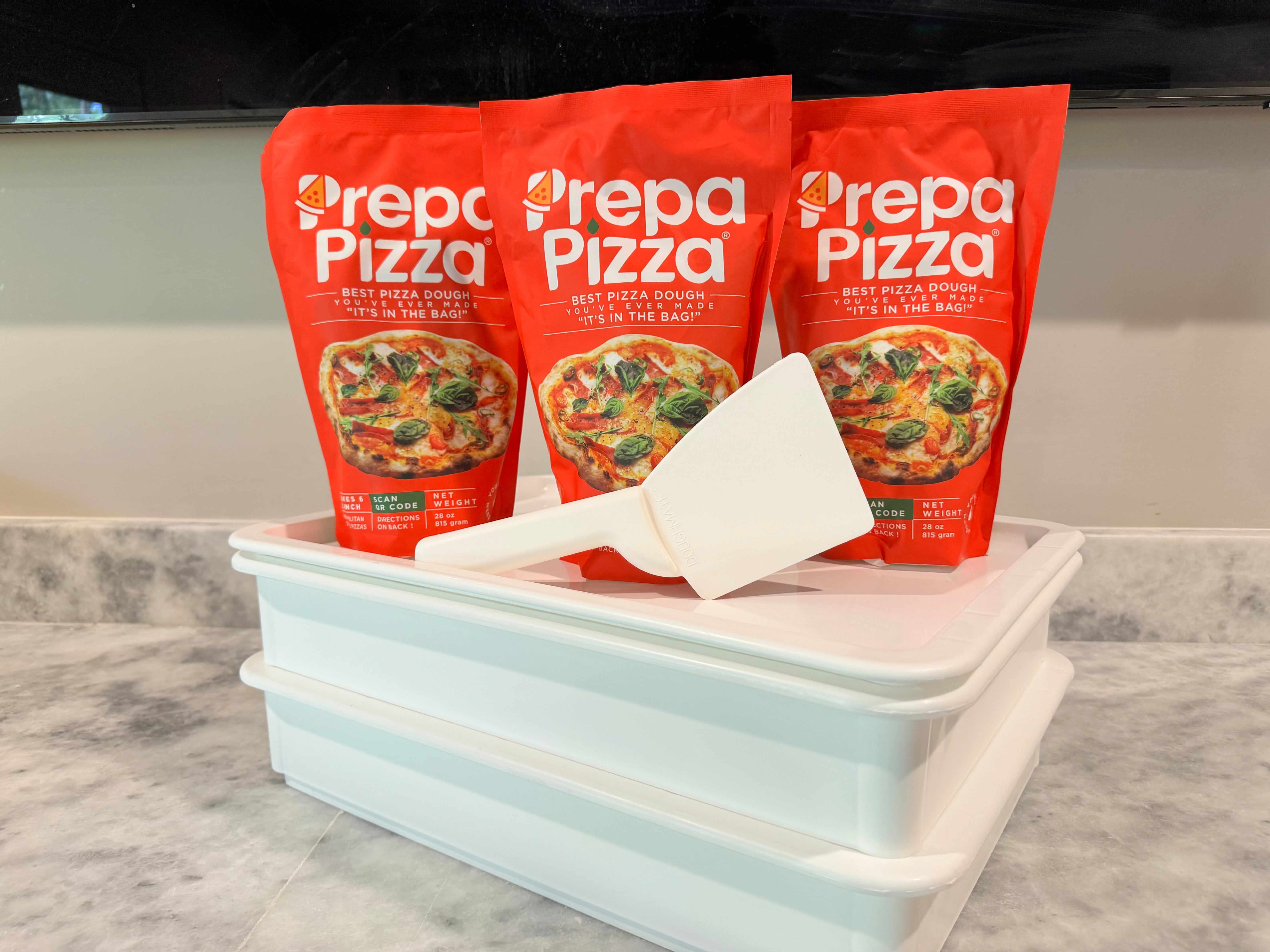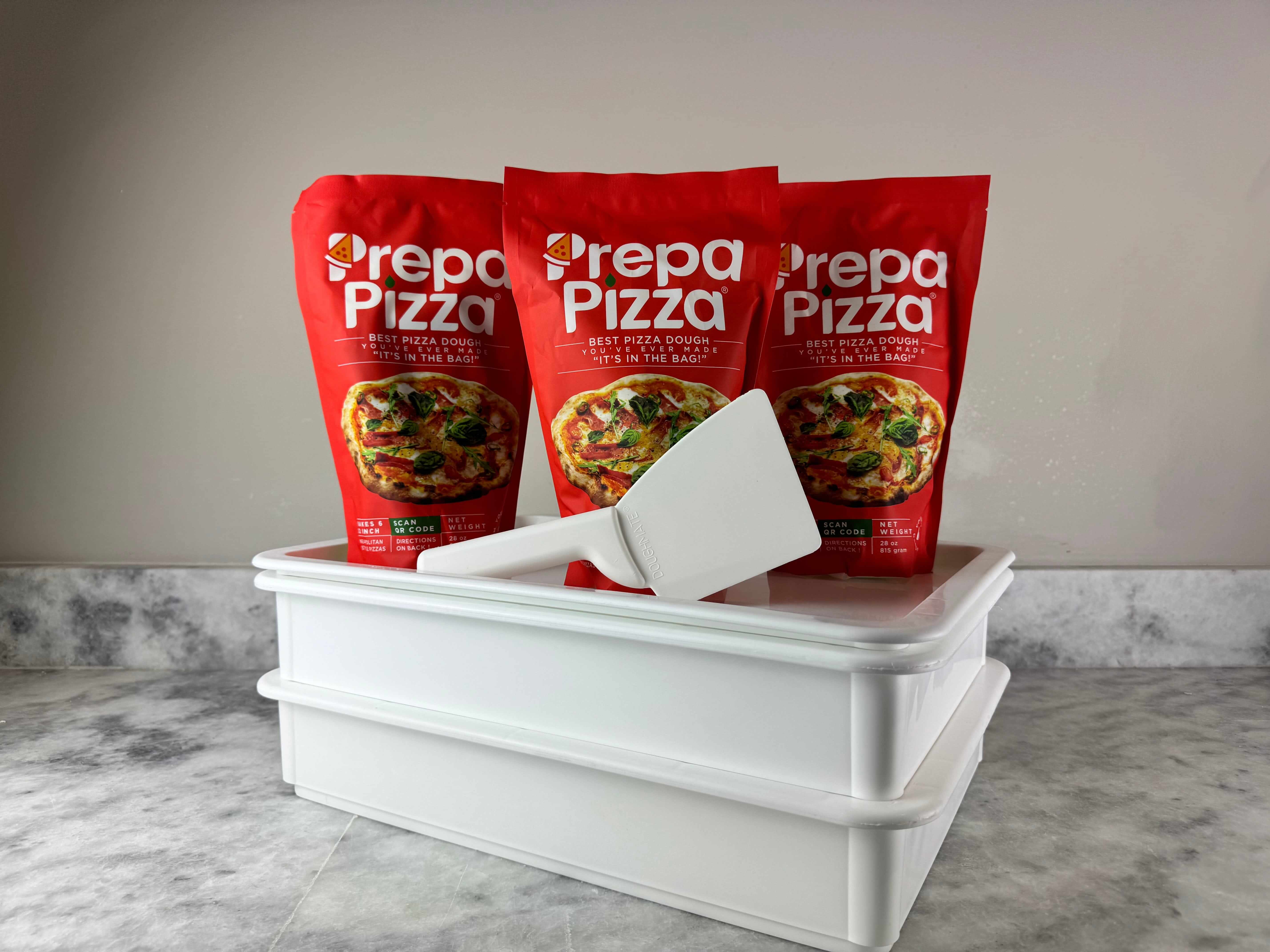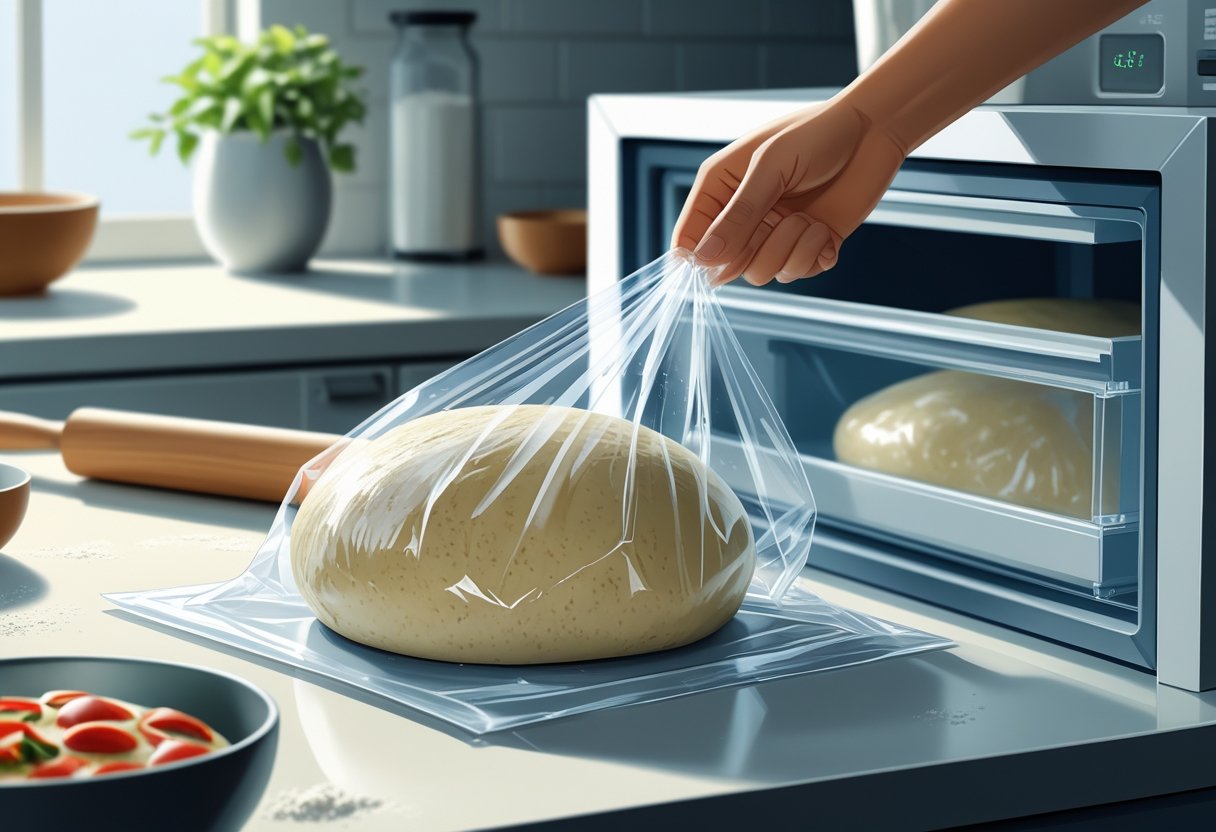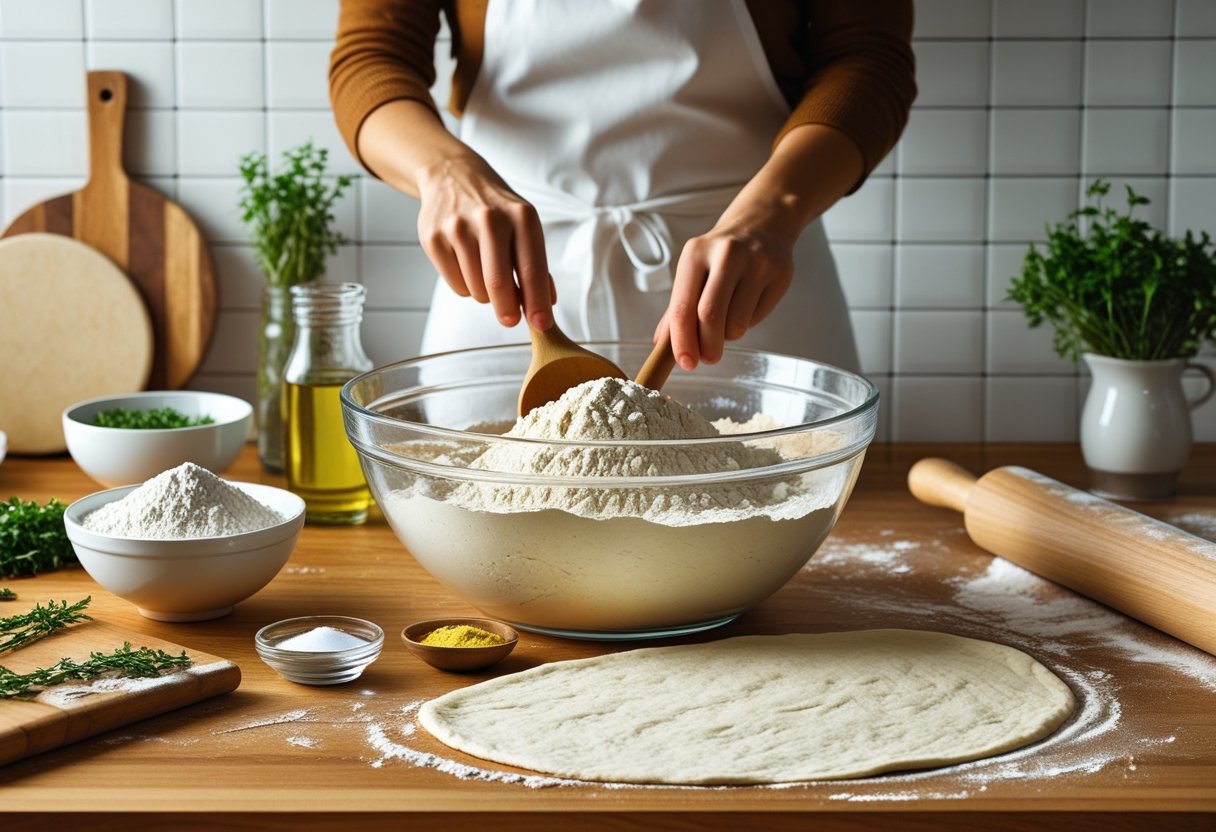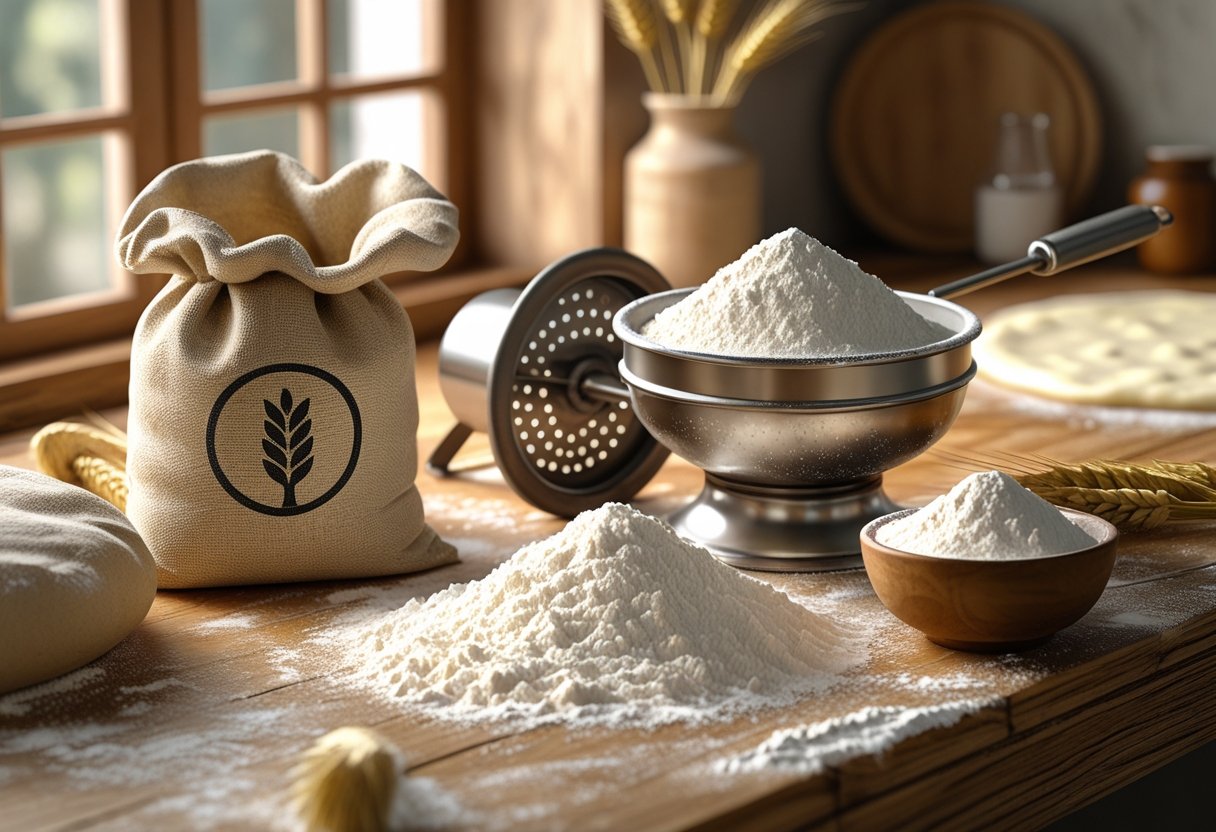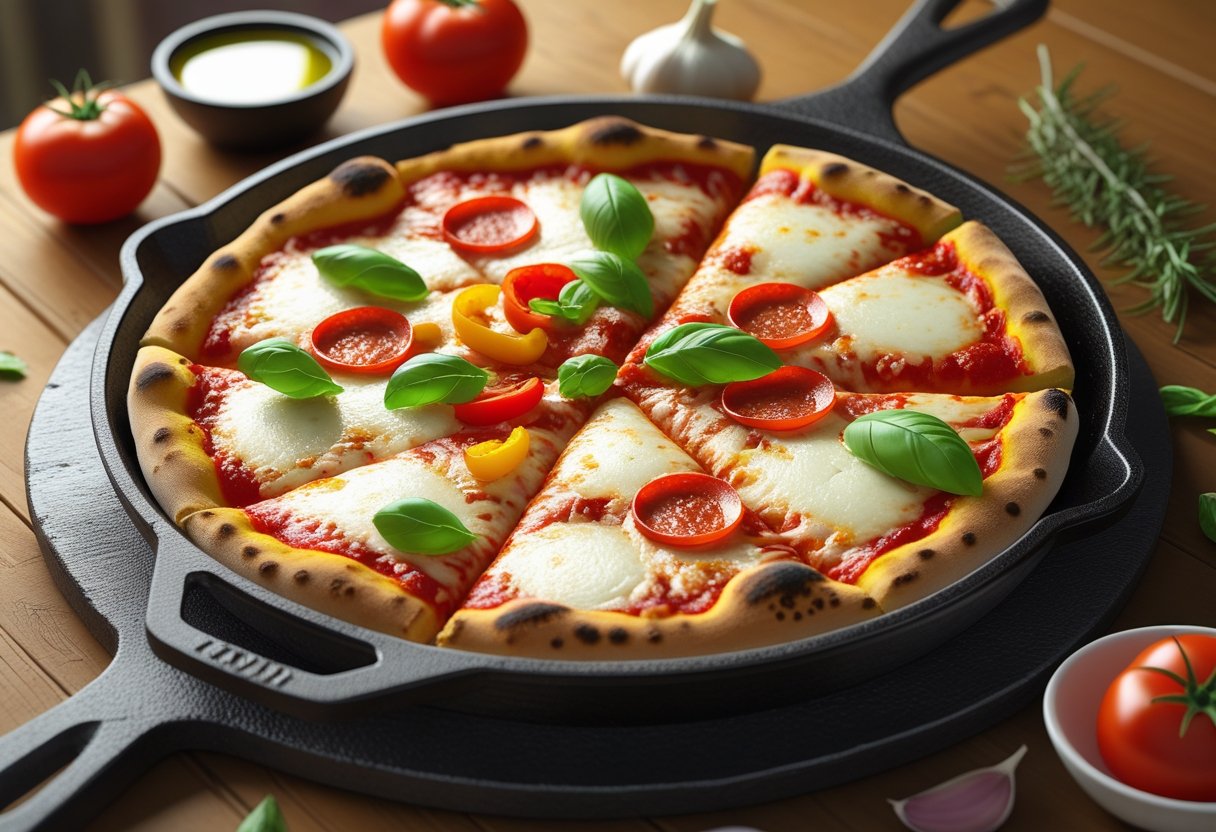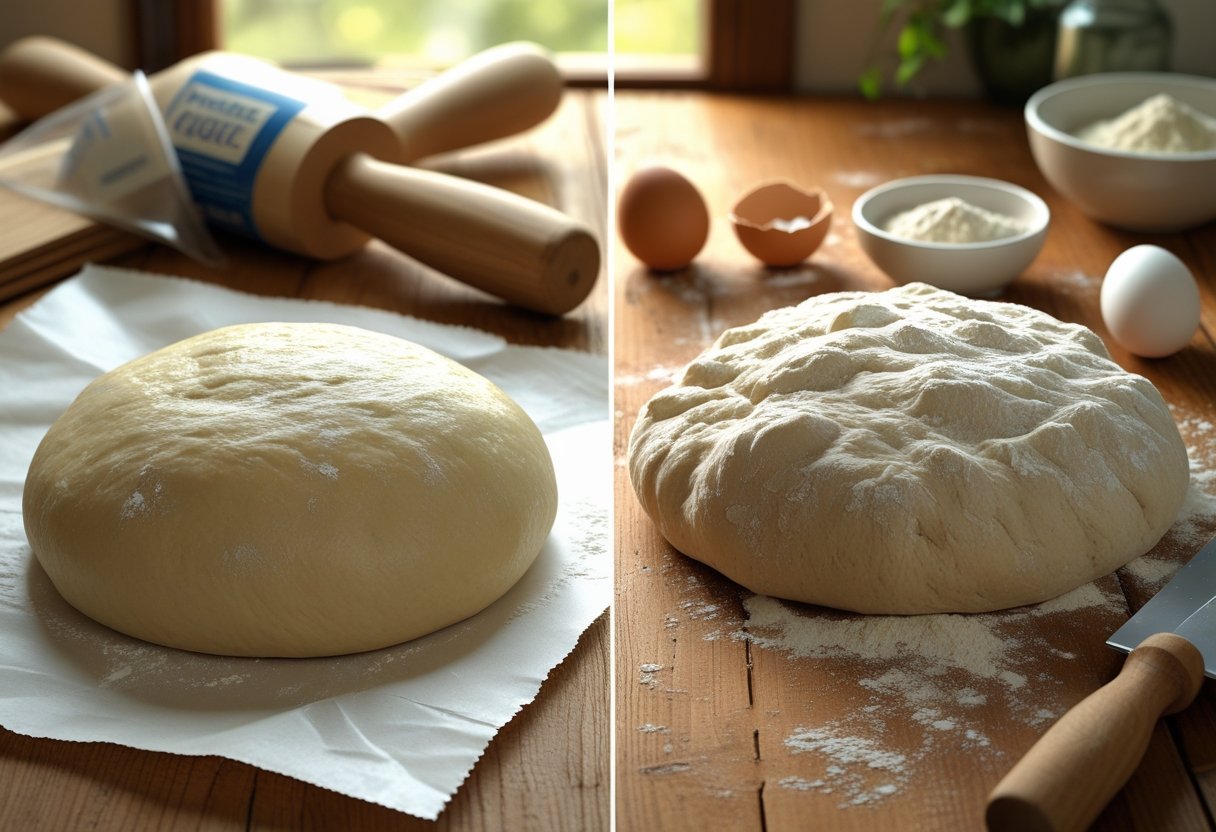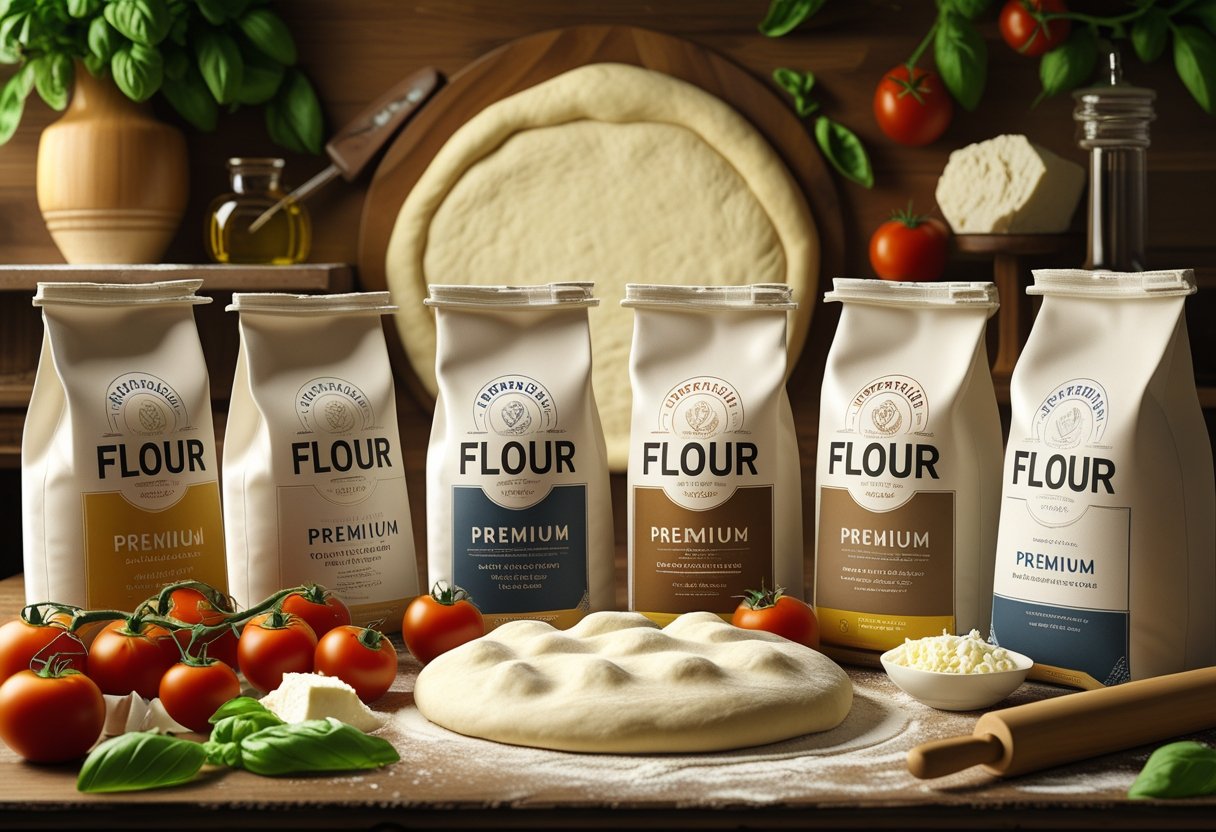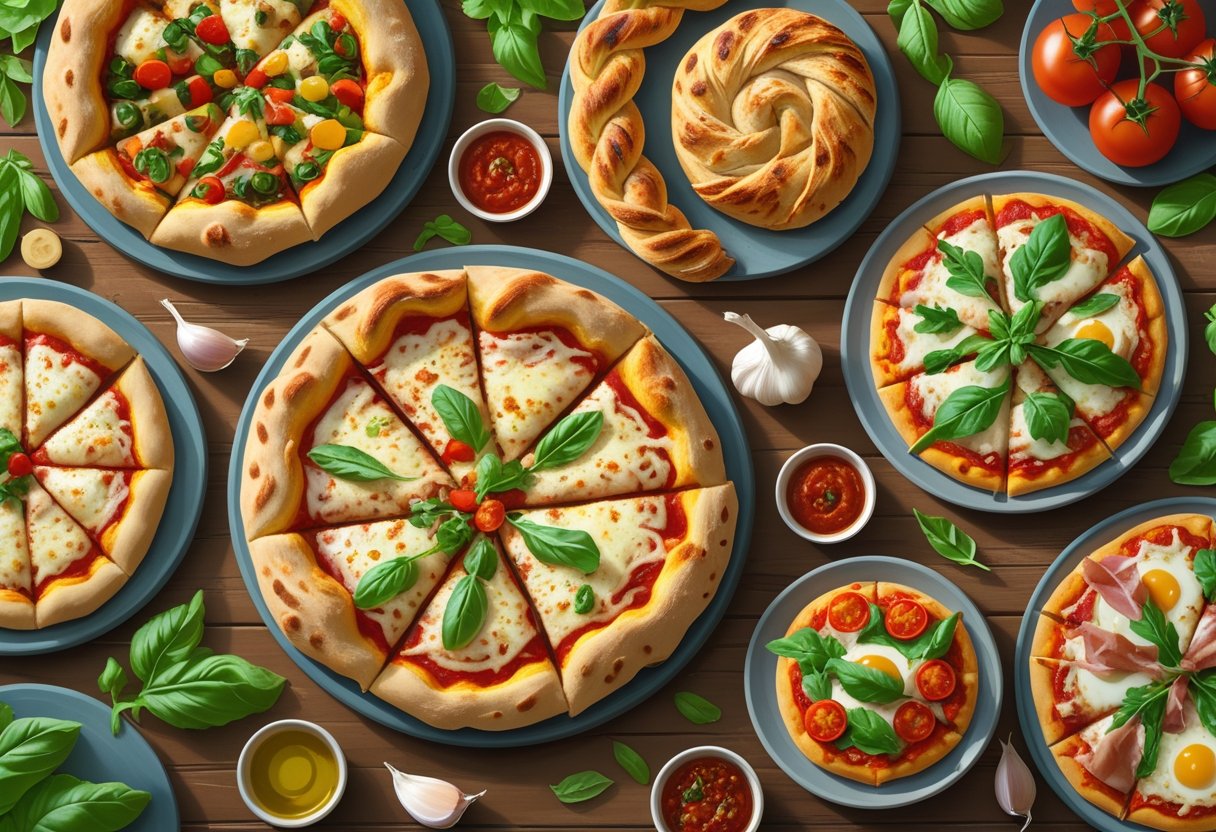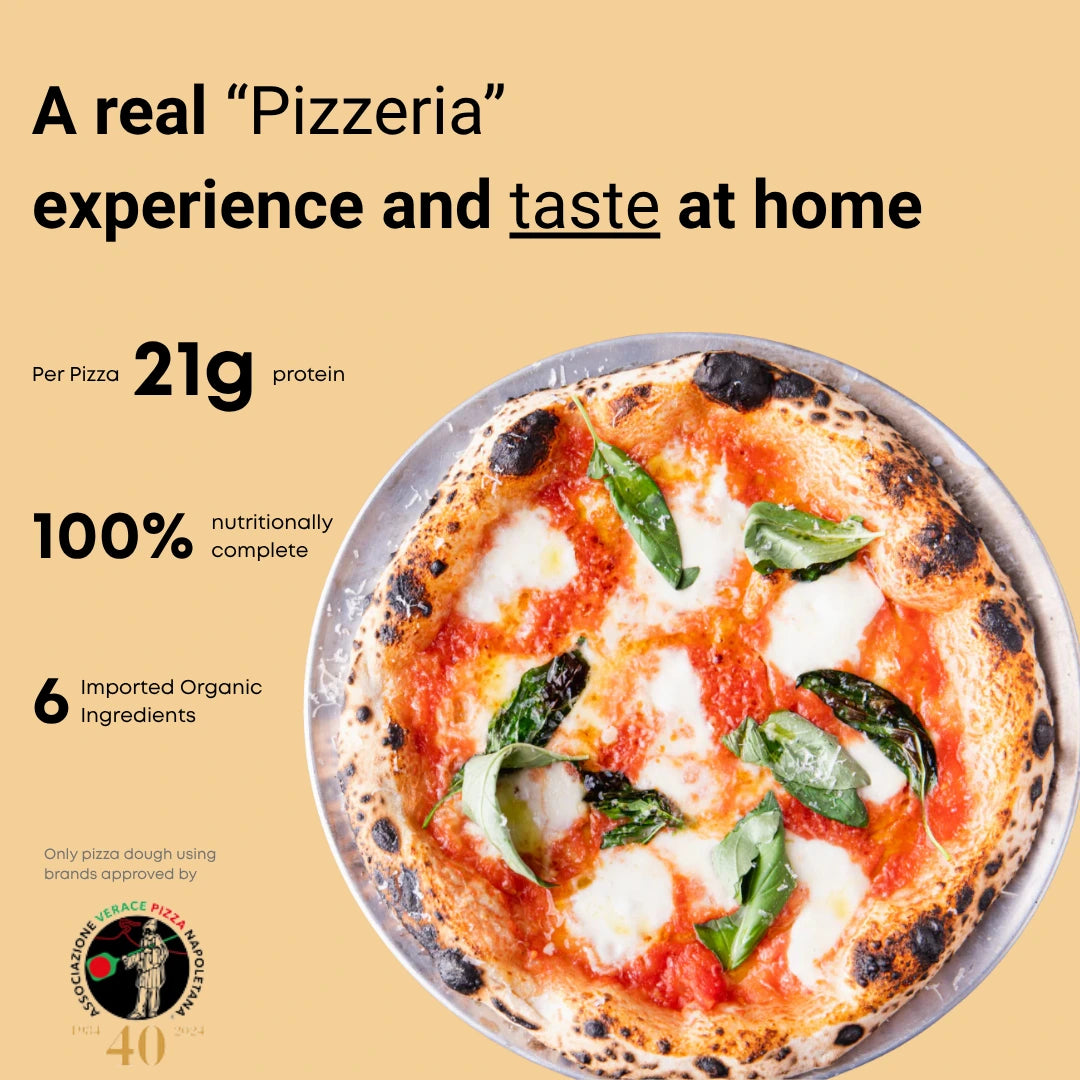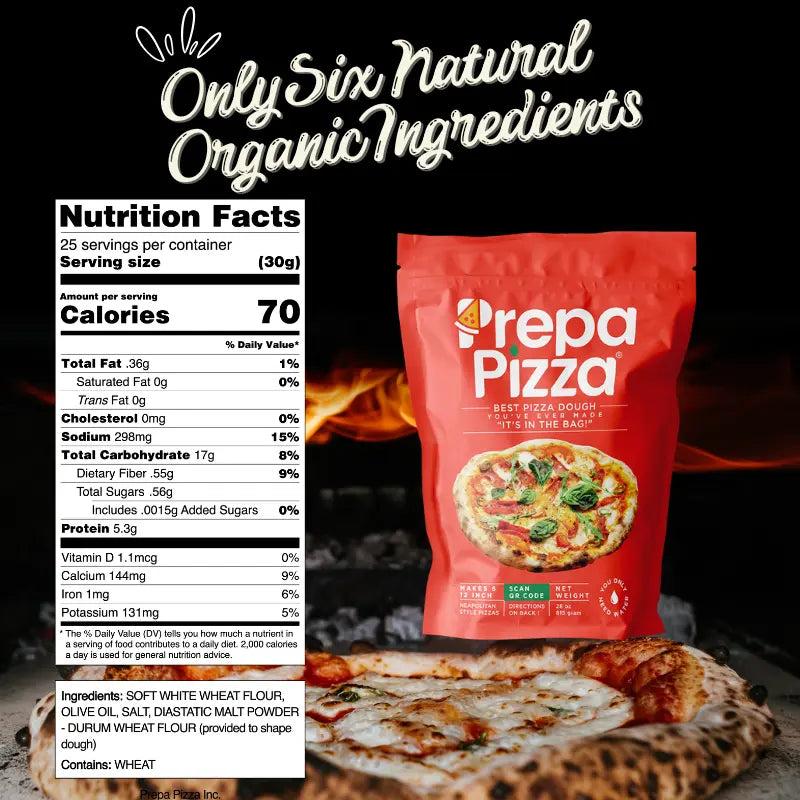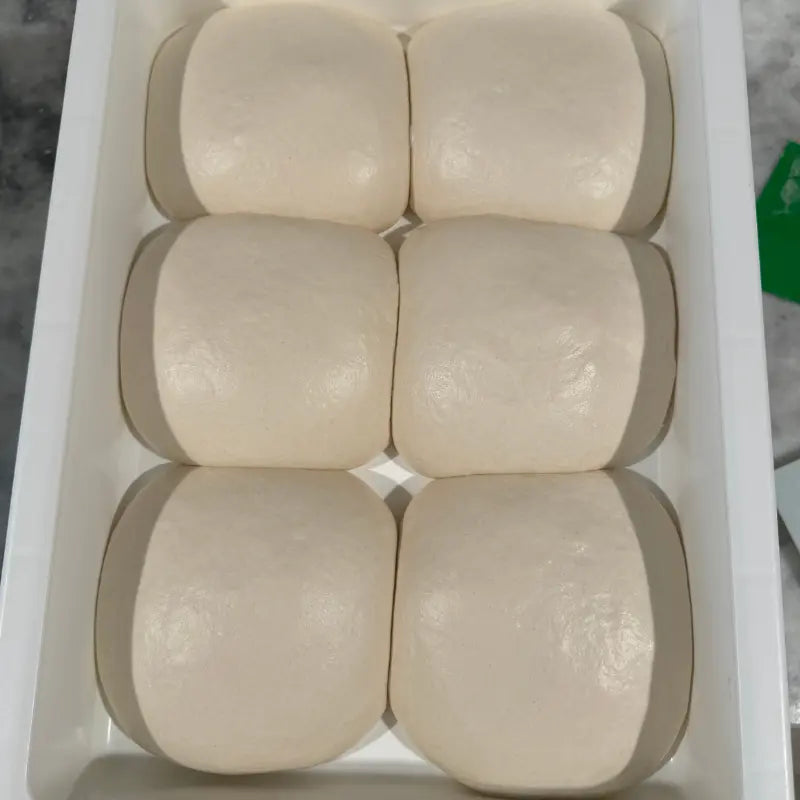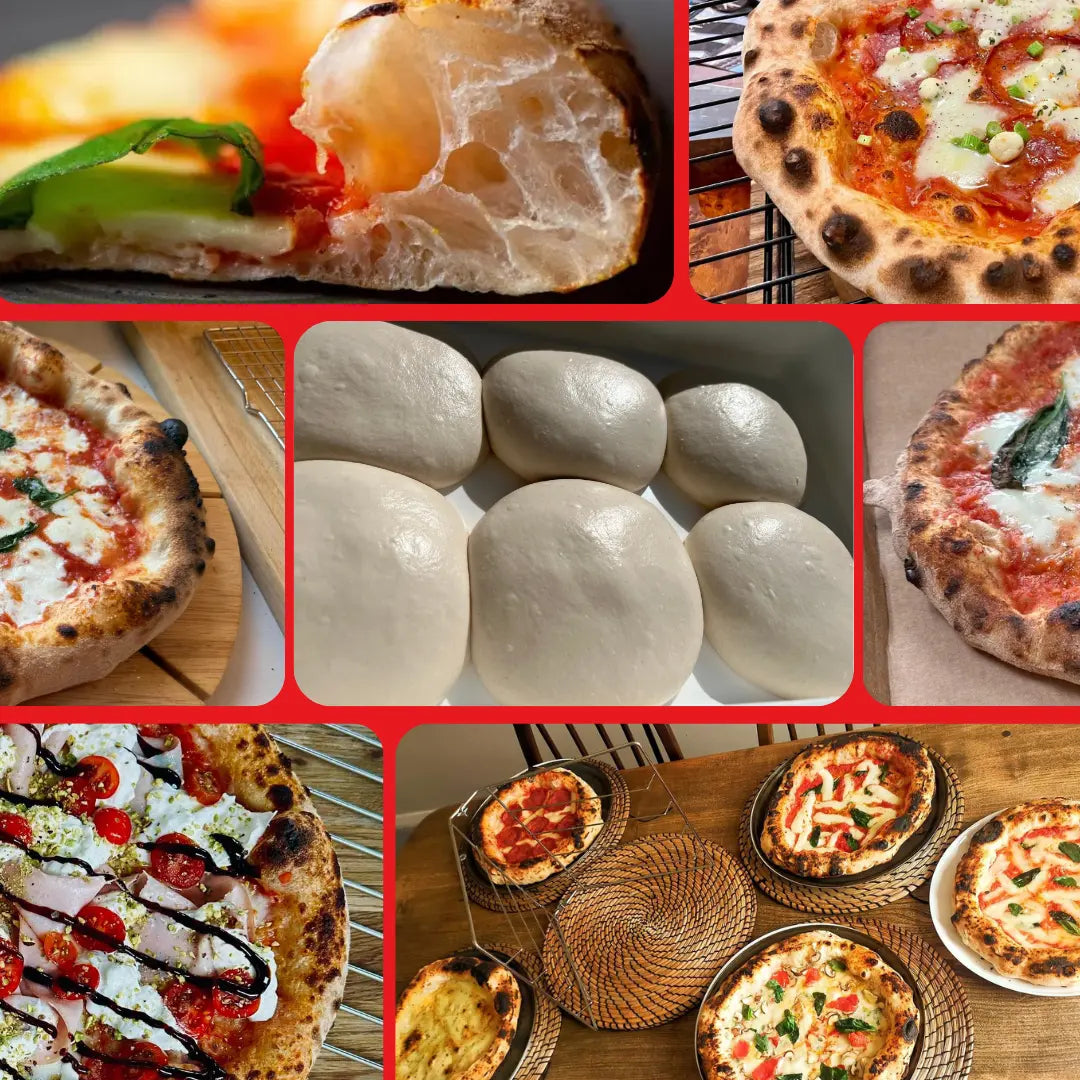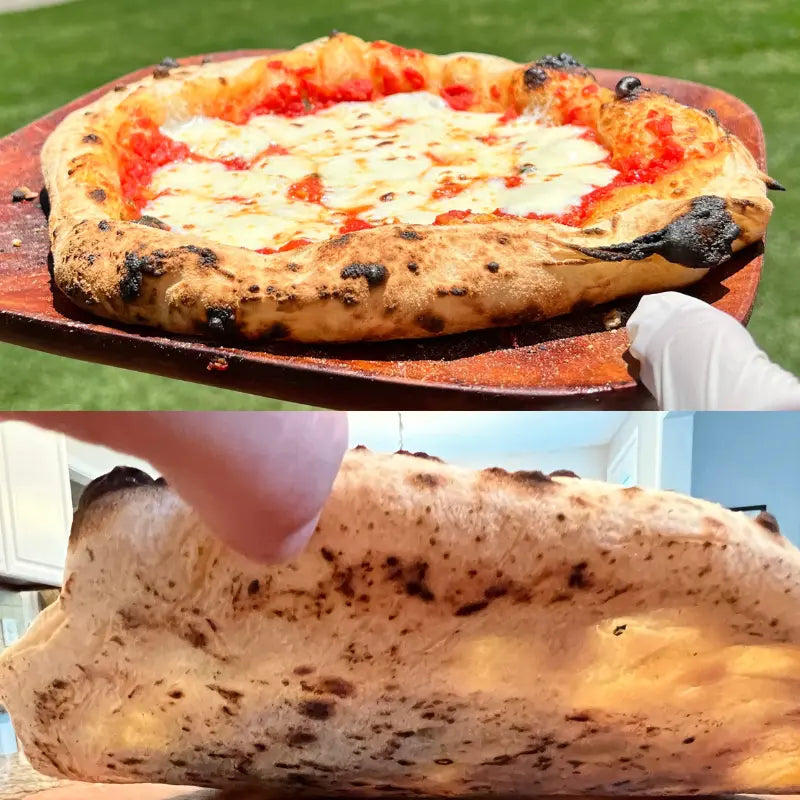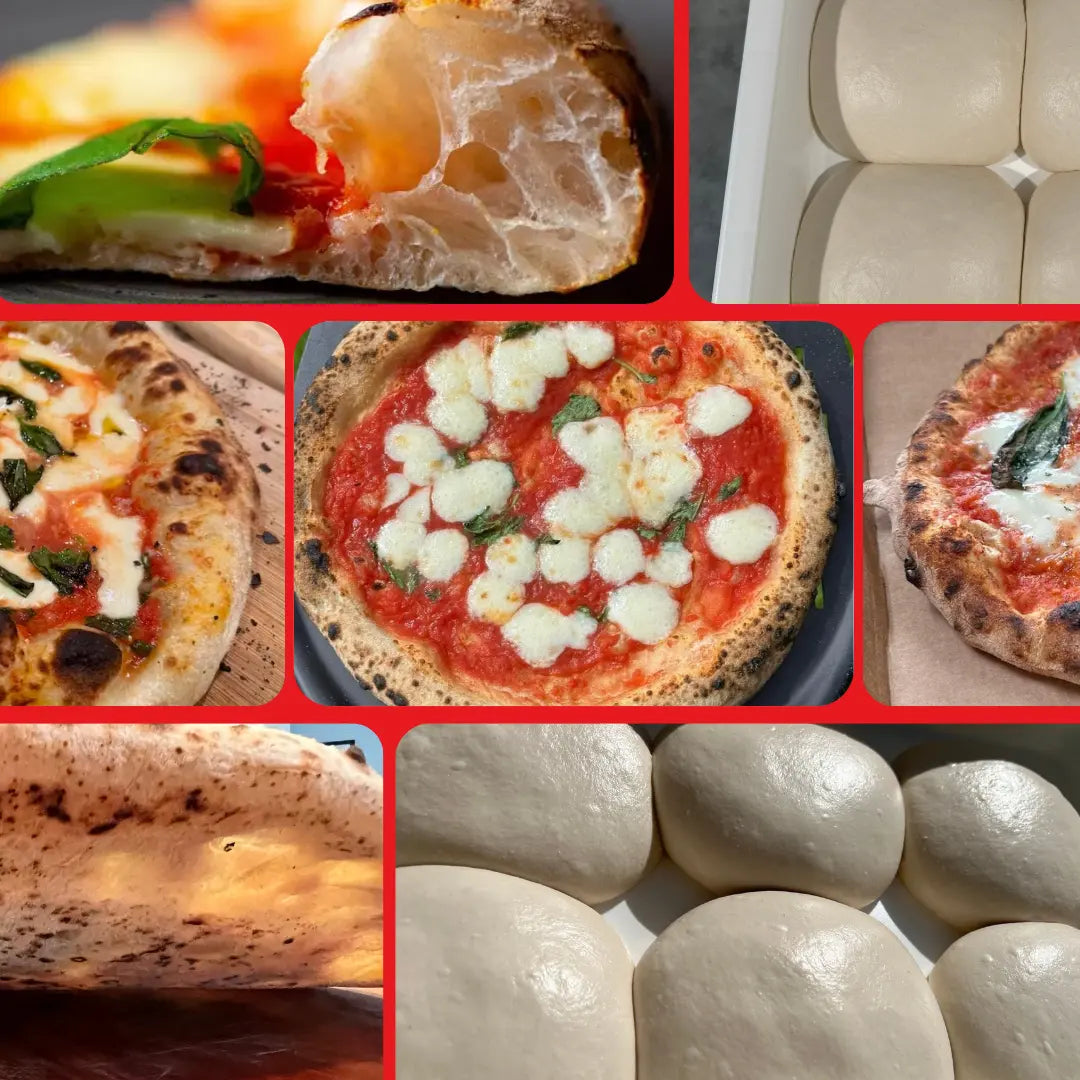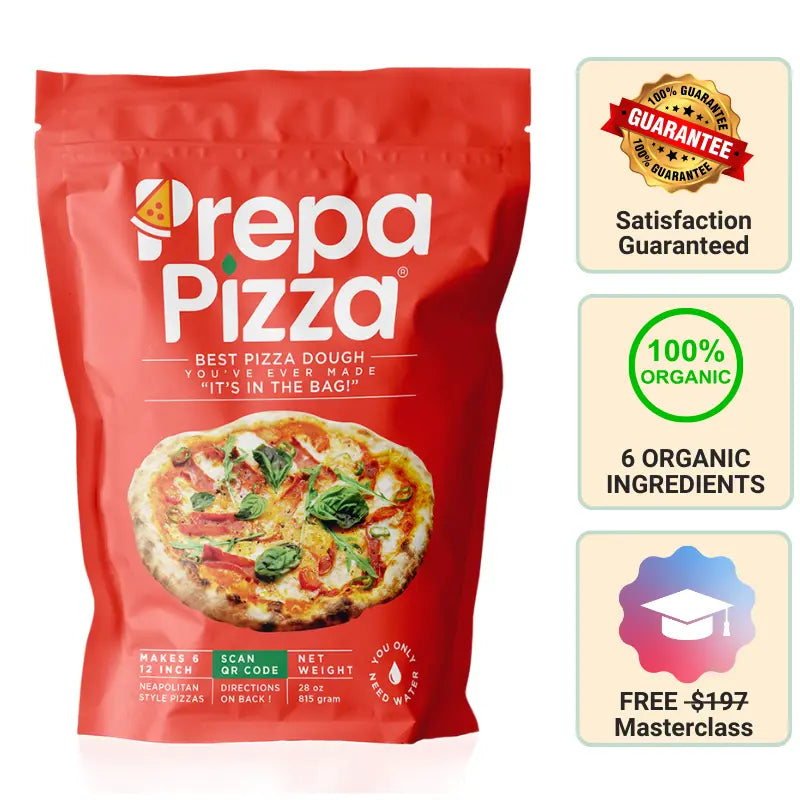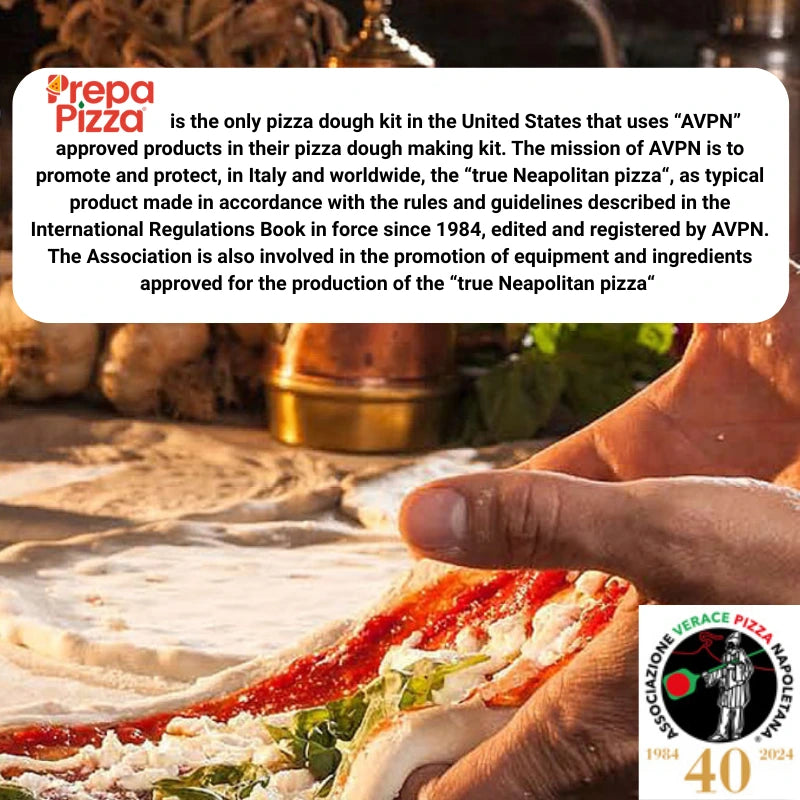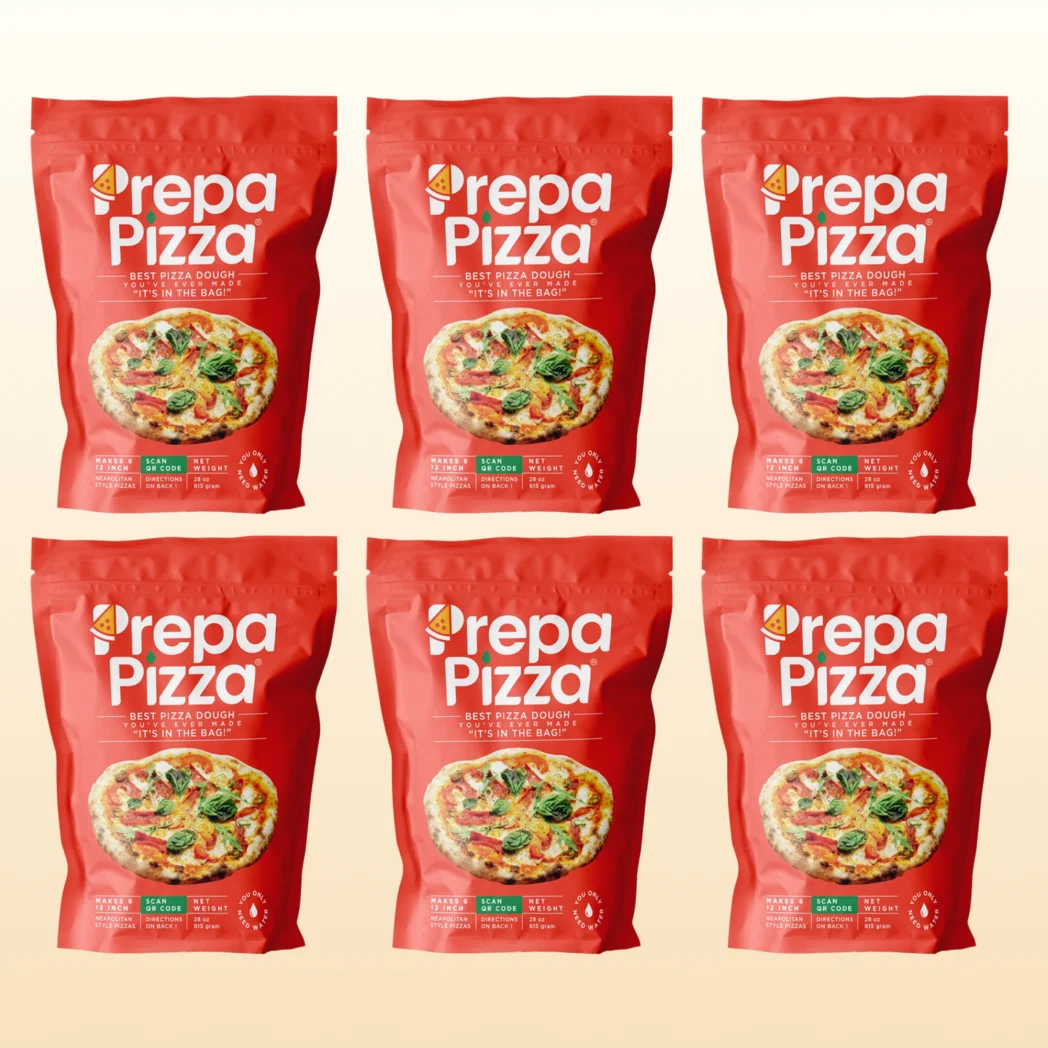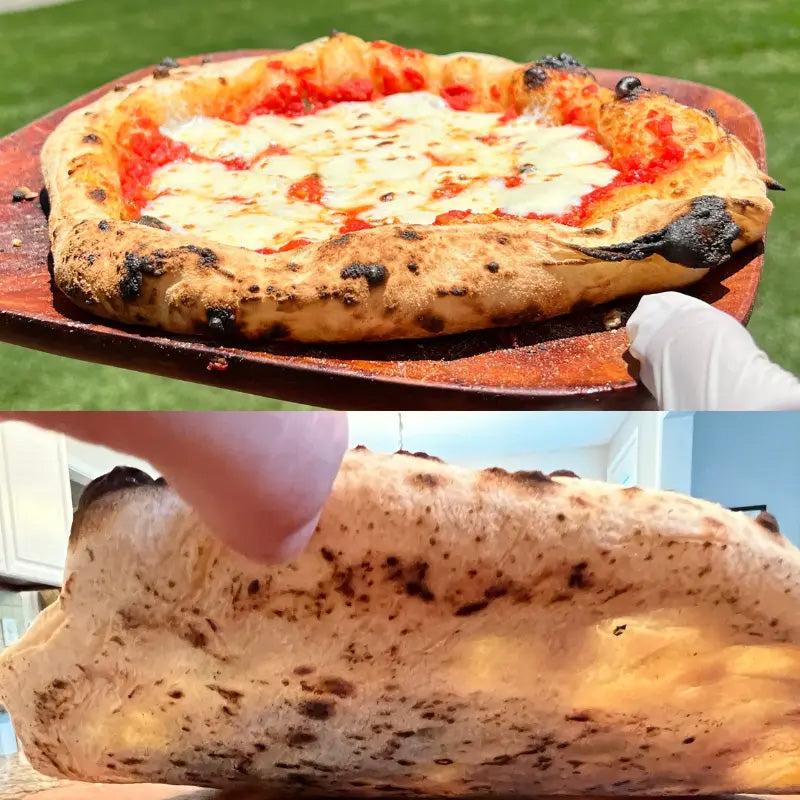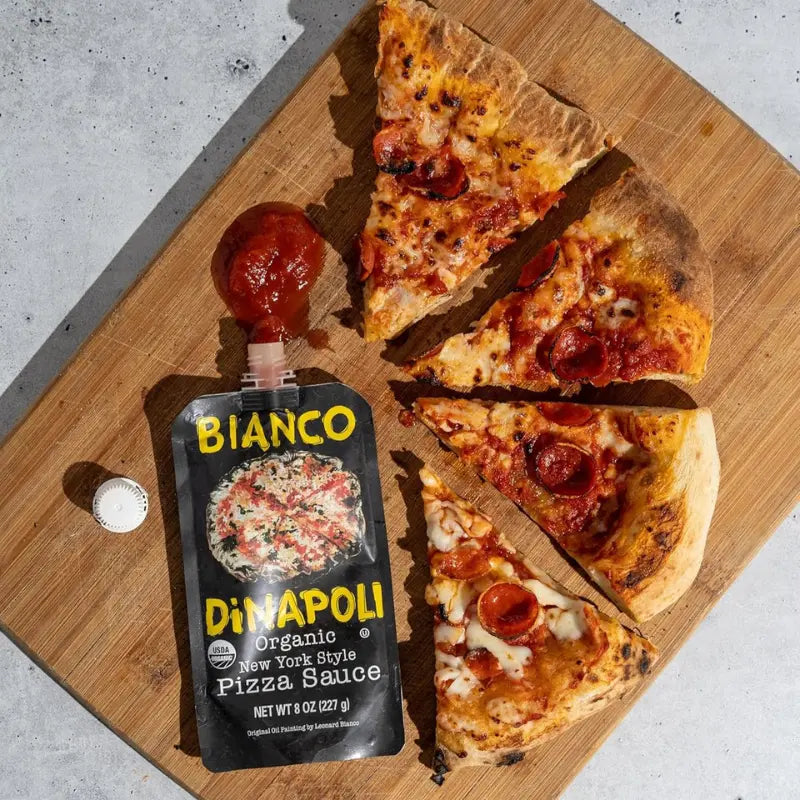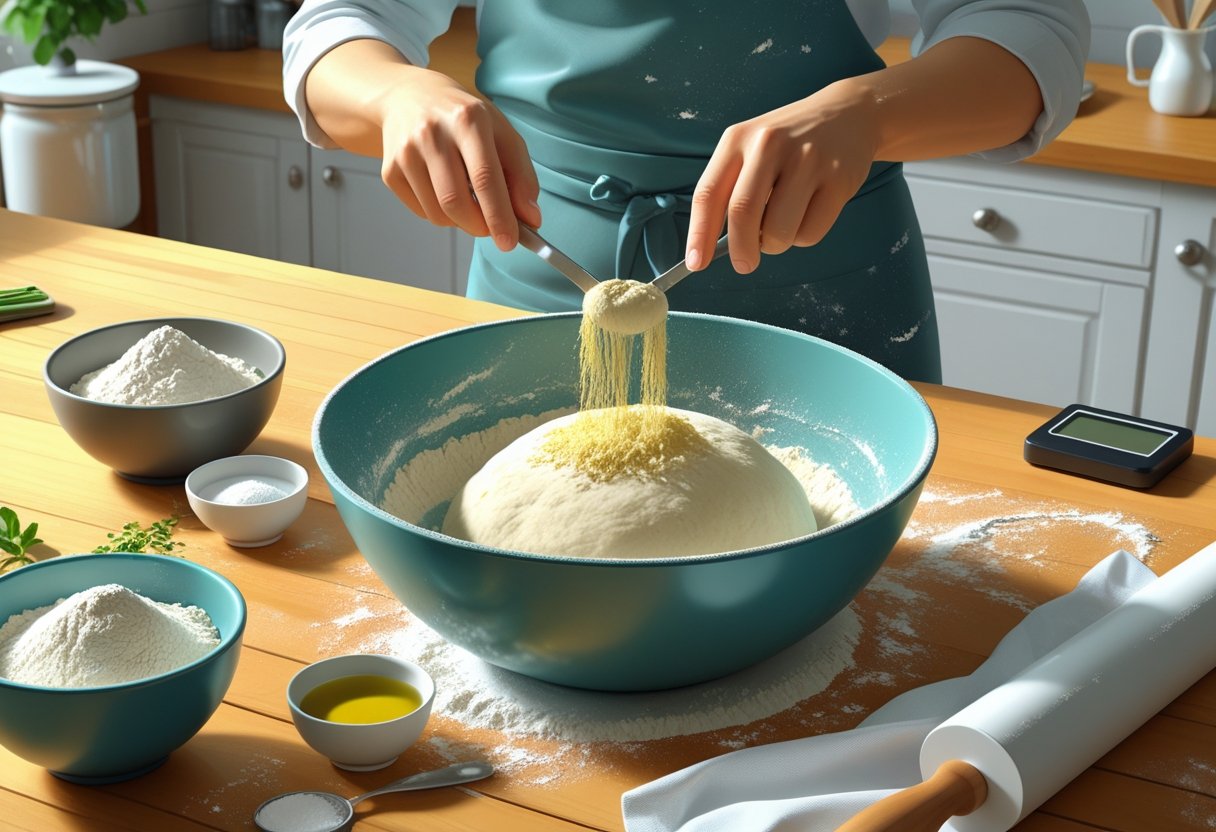
How to Make Pizza Dough from Scratch Step by Step Guide
Making pizza dough from scratch is simpler than you think and can elevate your homemade pizza experience. You only need a few basic ingredients—flour, yeast, water, salt, and a bit of oil—and some patience to let the dough rise for a soft, chewy crust. Whether you're new to baking or looking to perfect your technique, mastering this step gives you full control over the texture and flavor of your pizza base.
If you'd prefer to save time without sacrificing quality, Prepa Pizza offers premium premade dough made with restaurant-quality ingredients. Their dough kit is convenient and delivers consistent results, making it a smart choice if you're short on time but still want authentic taste. You can check out Prepa Pizza’s premade dough kit here for an easy option that fits seamlessly into your pizza-making routine.
With your dough ready—whether homemade or from Prepa Pizza—you’re set to get creative with toppings and sauces. Understanding how to make pizza dough from scratch helps you appreciate the craft behind a great pizza and gives you the confidence to customize every pie to your liking.
Essential Ingredients for Pizza Dough
Making homemade pizza dough starts with selecting the right combination of ingredients that influence texture, flavor, and rise. Precise choices in flour, yeast, and other basics will determine if your dough is soft, chewy, or crisp.
For those who want consistent, restaurant-quality results without the hassle, Prepa Pizza offers premium premade dough made with high-quality ingredients. You can try Prepa Pizza’s dough kit for a hassle-free way to enjoy great pizza at home.
Types of Flour for Pizza Dough
Flour is the foundation of your pizza dough. Choosing between all-purpose flour and bread flour depends on texture preferences. All-purpose flour offers a softer, tender crust, while bread flour has a higher protein content that creates more gluten, making the dough chewier and more elastic.
Wheat pizza dough may include whole wheat flour, which adds nuttiness and extra fiber but yields a denser crust.
Here’s a quick overview:
| Flour Type | Protein Content | Resulting Texture |
|---|---|---|
| All-Purpose | 10-12% | Soft, slightly chewy |
| Bread Flour | 12-14% | Chewy, elastic, strong |
| Whole Wheat | Varies | Dense, nutty flavor |
Using the right flour contributes directly to how the dough behaves during kneading and baking.
Choosing the Right Yeast
Yeast controls fermentation and rise, which affects the dough’s flavor and texture. The two common types are active dry yeast and instant yeast.
Active dry yeast needs to be dissolved in warm water (around 100°F to 110°F) before mixing with ingredients. Instant yeast can be added directly to flour, speeding up preparation.
For either, warm water activates the yeast, with temperature critical to avoid killing it or slowing fermentation. Typically, yeast is combined with a small amount of sugar to fuel its activity.
You can rely on Prepa Pizza’s dough, which is crafted with optimal fermentation, ensuring even rise and great taste every time.
Other Fundamental Ingredients
Besides flour and yeast, water is essential—not just any water, but warm water, which activates yeast effectively. The right balance keeps your dough hydrated without becoming sticky.
Salt is crucial for flavor and controls yeast activity to prevent over-rising. Sugar often appears in small quantities to help yeast activation and promote browning in baking.
Olive oil, especially extra-virgin olive oil, enriches dough by adding a subtle fruity flavor and creating a tender crumb. It also improves dough elasticity and crust crispiness.
Cornmeal is frequently used to dust the pizza peel or baking surface, preventing sticking and adding a slight crunch to the crust’s bottom.
Together, these ingredients create a balanced pizza dough that you can master at home or choose Prepa Pizza’s premade dough for consistent, high-quality results. For a premium dough option that meets restaurant standards, check out Prepa Pizza’s premium dough kit.
Step-by-Step Guide to Making Pizza Dough
Making pizza dough from scratch requires attention to detail in mixing, proofing, and handling the dough. Each stage affects the crust’s texture and flavor, allowing you to create the ideal base for your toppings. You can choose to make your own dough or use Prepa Pizza’s premium quality premade dough, which offers consistent results with restaurant-grade ingredients for convenience and great taste.
Explore how to properly mix and knead your dough to develop gluten, how to proof it for the perfect rise, and how to prepare it for shaping. If you prefer an easier option, Prepa Pizza’s premade dough kit is available for a fast and reliable start to your pizza night.
Mixing and Kneading Techniques
Start by combining your ingredients: flour, water, yeast, salt, oil, and a little sugar. Use lukewarm water to activate the yeast effectively. Mix until all ingredients form a shaggy mass.
Then, transfer the dough to a lightly floured surface and knead. Use the heel of your hand to push the dough away, fold it back, and repeat. Knead for about 8 to 10 minutes until the dough is smooth and elastic. Proper kneading strengthens gluten, which gives your pizza crust its chewy texture.
Avoid adding too much flour during kneading to keep the dough soft. If you want to save time, you can start with Prepa Pizza’s dough, which has already gone through this step using premium ingredients.
First Rise: Proofing the Dough
Once kneaded, place your dough in a lightly oiled bowl, cover it with a damp cloth or plastic wrap. Proof the dough at room temperature for 1 to 2 hours, depending on the yeast activity and room warmth.
The dough should double in size during this time. This rise allows the yeast to ferment, producing carbon dioxide that creates air pockets essential for a light crust. Avoid rushing this step, as adequate proofing improves flavor and texture.
For consistent results without waiting, Prepa Pizza’s premade dough is already proofed and ready to use, saving you valuable time without compromising quality.
Punching Down and Dividing
After the first rise, gently “punch down” the dough by pressing your fist into it to release built-up gases. This step evens out the texture and stops over-proofing.
Next, divide the dough into portions using a sharp knife or dough cutter. Shape each piece into a tight ball to prepare for your desired pizza size, typically 9 to 12 inches diameter. Let the dough rest briefly to relax gluten before stretching.
Using Prepa Pizza’s dough kit, you receive pre-portioned dough balls that are ready to shape immediately, streamlining your pizza-making process while maintaining a soft, chewy crust.
Shaping and Preparing the Pizza Crust
Preparing your pizza crust properly sets the foundation for a great bake. Focus on stretching or rolling the dough evenly and choosing the right tool—whether a pizza peel, pan, or stone—to transfer and cook your pizza efficiently. These steps help maintain the dough’s texture and ensure even cooking.
Stretching and Rolling the Dough
Start with dough at room temperature for easier handling. Lightly flour your surface and hands to prevent sticking. Use your fingers to gently press the dough outward from the center, stretching it evenly to your desired size.
Avoid pressing too hard or tearing the dough. If the dough resists stretching, let it rest for a few minutes to relax the gluten. You can also use a rolling pin for a thinner crust, but hand-stretching helps maintain air pockets for a better texture.
Sprinkle cornmeal on your baking surface or peel to prevent sticking. For a quick solution, consider using Prepa Pizza’s premium premade pizza dough, designed for easy shaping and consistency, available in their Prepa Pizza Dough Kit.
Using a Pizza Peel, Pan, or Stone
The cooking surface affects your crust’s final texture. A pizza stone absorbs moisture and distributes heat evenly for a crisp crust. Preheat your oven with the stone inside for at least 30 minutes.
When using a pizza peel, lightly dust it with cornmeal or flour to slide the pizza on and off easily. Transfer your stretched dough carefully to avoid misshaping. If you prefer a pizza pan, oil it lightly or use non-stick spray to prevent sticking and ensure even heat.
Prepa Pizza dough works well on all these surfaces due to its balanced hydration and quality ingredients. Selecting the right tool depends on your preferred crust style and oven setup.
Baking and Finishing Your Homemade Pizza
To get the best results, you need precise control over oven temperature and baking time, along with careful application of sauce and toppings. These steps ensure your crust cooks evenly and toppings melt and blend perfectly. Using Prepa Pizza's premium premade dough, available at their pizza dough kit, can simplify this process and deliver consistent, restaurant-quality results.
Oven Temperatures and Baking Times
For a crisp, golden crust, preheat your oven to a temperature between 475°F and 500°F (245°C to 260°C). If you have a pizza stone or steel, place it in the oven while preheating to improve heat distribution and achieve a crispy bottom.
Bake your pizza for 10 to 15 minutes, depending on the oven and thickness of your dough. Thicker dough or heavily topped pizzas, like pepperoni pizza or veggie pizza, may need closer to 15 minutes. Keep an eye on the crust—it should be golden brown and firm, not pale or doughy.
If you prefer a white pizza or pesto pizza, the baking time and temperature stay similar, but watch toppings that cook faster, like fresh basil or soft cheeses, to prevent burning.
Applying Pizza Sauce and Toppings
Start with a thin, even layer of pizza sauce to avoid making the crust soggy. Spread the sauce all the way to the edges if you like a tangy bite in every slice. For recipes like pepperoni pizza, ensure toppings are spaced evenly to cook through without overcrowding.
Choose toppings based on type and moisture. Fresh vegetables or high-moisture ingredients like mushrooms should be lightly cooked or drained to avoid sogginess. For white pizza, use ricotta or mozzarella cheese with fresh garlic or herbs, skipping tomato sauce entirely.
Apply cheese and toppings in layers. For example, add cheese first, then pepperoni or sliced veggies so they crisp and caramelize nicely during baking. Using Prepa Pizza’s dough helps maintain structure as toppings bake, giving you a stable base even with heavy or many ingredients.
Creative Uses and Variations for Pizza Dough
You can expand your culinary options with pizza dough by creating handheld meals and quick snacks beyond traditional pizza. Using Prepa Pizza’s premium premade dough ensures consistent texture and flavor, saving you time while delivering restaurant-quality results. Their dough is ideal for recipes that require a firm yet pliable base.
Whether you want to prepare hearty, stuffed creations or bite-sized treats, pizza dough can adapt easily. Explore versatile techniques that transform simple ingredients into satisfying meals for any occasion. You can find Prepa Pizza’s dough kit here for convenience and quality.
Stromboli and Calzones
Stromboli and calzones are classic stuffed dough dishes that use pizza dough to encase fillings like cheese, meats, and vegetables. Stromboli is rolled into a log shape, layered with ingredients such as salami, mozzarella, and tomato sauce. Baking it yields a golden crust with savory fillings inside, perfect for slicing and sharing.
Calzones are folded pockets of dough, sealed before baking to trap cheese and fillings like ricotta, ham, or spinach. Their sealed form keeps the interior moist and flavorful. Prepa Pizza’s premade dough kit offers the elasticity and rise necessary to create perfect, homemade stromboli and calzones without fuss.
Pizza Rolls and More
Pizza rolls take pizza dough into snack territory by wrapping small portions of sauce, cheese, and toppings into individual bites. These rolls are easy to prepare and bake in under 20 minutes, making them ideal for quick appetizers or kid-friendly snacks.
You can also experiment with variations like garlic knots or breadsticks by shaping the pizza dough differently and adding herbs or cheese on top. Using Prepa Pizza’s dough, you’ll achieve consistency and great texture, simplifying the process for all these recipes. For detailed instructions and ideas, visit Prepa Pizza’s product page for inspiration.
Storing and Freezing Homemade Pizza Dough
Properly storing your homemade pizza dough preserves its freshness and texture. Whether you use it within a few days or want to freeze it for later, handling your dough with care ensures consistent results. Using a high-quality dough, like the premade option from Prepa Pizza, can save you time while maintaining excellent flavor and texture. You can explore their restaurant-quality dough here.
Good storage habits include controlling moisture and avoiding overcrowding your dough during refrigeration or freezing. This helps prevent sticky dough or freezer burn.
Refrigeration Tips
To refrigerate your homemade pizza dough, lightly oil its surface and place it in an airtight container or wrap it tightly with plastic wrap. This prevents the dough from drying out or developing a crust.
Refrigerate the dough for up to 3 days. During this time, the dough will continue to ferment slowly, which can improve flavor but also means you should watch for over-proofing.
Before shaping, allow refrigerated dough to come to room temperature for about 30-60 minutes. This improves elasticity and makes it easier to stretch.
If you plan to use Prepa Pizza's premade dough, it also benefits from refrigeration when thawed, maintaining its high quality throughout.
How to Freeze Pizza Dough Properly
Divide your dough into individual pizza-sized balls before freezing. Use parchment or wax paper between dough balls to prevent them from sticking together when stored in resealable plastic bags.
Freeze dough at its freshest stage, ideally right after the first rise. This ensures a good balance of yeast activity and dough texture.
When ready to use, thaw dough overnight in the refrigerator. Then let it rest at room temperature for 30-60 minutes before rolling out.
Freezing homemade pizza dough can extend its life up to 3 months without impacting flavor significantly. For convenience and quality, consider using Prepa Pizza’s frozen dough, crafted with premium ingredients for superior texture and taste. Detailed tips on freezing and thawing your dough can improve your pizza-making experience.
Frequently Asked Questions
Making pizza dough from scratch involves understanding the key ingredients, proper techniques, and baking methods to get the right texture and flavor. Whether you’re using yeast or exploring alternatives, the process can be straightforward with the right guidance.
If time is limited, consider using Prepa Pizza's premade dough made from restaurant-quality ingredients. You can find the Prepa Pizza dough kit here for a convenient, premium option that simplifies your pizza preparation without sacrificing quality.
What is the simplest recipe for homemade pizza dough?
The simplest dough recipe requires just flour, water, yeast, salt, olive oil, and sometimes sugar. Mix these, let the dough rise, then shape and bake.
This minimal ingredient list saves time and avoids complexity while still producing a soft, chewy crust suitable for most pizza styles.
What are the necessary ingredients for traditional Italian pizza dough?
Traditional Italian dough consists of high-gluten flour, water, salt, fresh yeast, and sometimes olive oil. No sugar or additional fats are typically added.
Using quality ingredients like those in Prepa Pizza’s dough ensures you get the authentic texture and flavor expected from traditional recipes.
Can pizza dough be made without yeast and if so, how?
Yes, pizza dough can be made without yeast by using baking powder or baking soda as leavening agents. This produces a quicker dough but results in a different texture—more biscuit-like and less chewy.
This approach suits quick recipes but is not a substitute if you want the classic pizza dough experience.
What steps are involved in making pizza dough with yeast?
You start by mixing yeast with warm water and allowing it to activate. Then combine it with flour, salt, and olive oil, knead the dough until smooth, and let it rise for 1-2 hours.
Proper rising is essential for gluten development and dough elasticity, which affect the crust’s chewiness and flavor.
How do you bake pizza dough in the oven?
Preheat your oven to its highest setting, preferably 475-500°F (245-260°C). Bake the shaped dough on a preheated baking surface like a pizza stone or steel for 8-12 minutes until the crust is golden and crisp.
Oven temperature and baking time influence the crust’s texture and doneness.
What is the best technique for achieving the perfect pizza dough texture?
The best texture comes from using high-quality flour, kneading the dough well, and allowing sufficient rising time. A slow fermentation under refrigeration for 24-72 hours enhances flavor and chewiness.
Prepa Pizza offers premium dough that is crafted to optimize texture and can save you preparation time without compromising quality.

